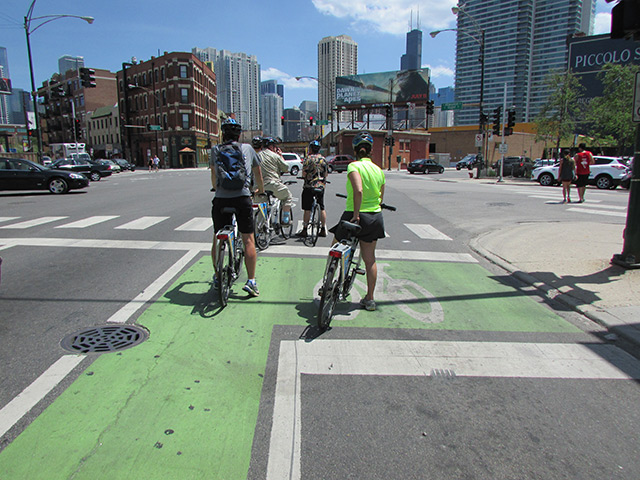
Creating attractive and vibrant places for the upcoming 75 percent
Photo: Bradenton farmers’ market. Credit: (cc) Cat Winterfox on Flickr.
Morgan J. Bettes is an executive and creative associate at Realize Bradenton, a nonprofit dedicated to promoting the arts, culture, heritage and sports in Bradenton, Fla., a Knight community.
Things to do this year: Transform Bradenton—or insert your city—into a vibrant area, attract and engage the millennial generation, connect the area’s physical and cultural assets, and the list goes on. Sound easy enough? Well, no, but as a 25-year-old professional I am more than eager to make a big difference in my small but forward-thinking community.

Related Links
“Using urban experiments to find happier streets” by Charles Montgomery on Knight Blog
“Making ‘doable’ ideas work for cities” by Mia Birk on Knight Blog
“Livable cities are becoming a science, but civic engagement is still an art” by Andrew Sherry on Knight Blog
Representing Realize Bradenton at the “The Doable City” forum in the heart of downtown Chicago recently, my mind was steamrolling from Day One. Supported by Knight Foundation and hosted by 8-80 Cities, a nonprofit dedicated to transforming cities into vibrant places, the forum gathered civic innovators from 19 communities around the U.S. to discuss and share issues that we face in creating lively areas that engage residents.
As numerous studies have shown, millennials are delaying marriage and families later than previous generations. We want more—and demand more—from where we choose to live, work and play, and we want all three in the same place. What attracts us to do that?
• Walkability/bikeability/public transportation • Engaging things to do • Being where our peers are
So what is walkability and bikeability? As millennials, we were brought up with reuse, reduce and recycle in our DNA. Throw a recession upon graduating into that mix and you get 77 million (24 percent of the U.S. population) hardworking, green-minded, creative, picky purchasers. This directly translates to how we choose to get around. It’s true what they say: Millennials will more often than not, opt for the easiest and cheapest, so why not make walking, biking and public transportation just that. What would that look like on a regular day? I’d walk out of my apartment, catch a pedicab to the office, walk to meet a few friends for happy hour after work, then walk or snag another pedicab home after grabbing a quick dinner from a local restaurant, all without worrying about gas, where to park and the fact that we deteriorated a little more of that precious ozone layer.
Let me be clear: We have limited time, limited money and limited attention spans. While you should strive to solve all three, if you pick at least one to overcome, you’re onto something.
Millennials don’t think in terms of 9-to-5, Monday through Friday. We are the first large group breaking the bounds of both social and professional norms by blending them more and more every day for a balanced life, all seven days a week. What does that mean for civic innovators? Step out of the box. Offer mini events that allow for low costs while still providing positive impact. Why not bring yoga out of the studio and into the street for Tuesday night classes, or concerts in a park on Wednesday evenings with beer and popcorn for purchase?
On the flipside of low costs, if we are drawn into an event, cost becomes irrelevant. We will purchase a ticket and get each of our friends to do the same—aka free promotion. Events that offer engaging and unique experiences are ones I will shell out big bucks for. As an example of something that informs and engages, take Pickin’ Picnic, a Realize Bradenton production featuring all-day live music, craft beer and battling food trucks to kick off the event. Who knew craft beer sales would triple by featuring on-site brewmasters from the new local breweries to initiate two-way conversations on brewing beer and attract over 3,000 people, mainly millennials.
This last point is crucial: If you don’t have peers to enjoy happy hour with, attend events or simply the possibility of meeting a new friend, a professional partner or your next significant other, it all becomes irrelevant. Like most people, we millennials desire to be around our peers. We will go where like-minded people gather.
As to why cities, businesses, and individuals in leadership roles shouldn’t ignore millennials, let me throw out a number: 75. According to information from the Business and Professional Women’s Foundation cited in a 2013 article by Karsten Strauss on Forbes.com, millennials will comprise 75 percent of the global workforce by 2025. Crudely put, it is now a race as to which cities are able to build and promote the most vibrant communities to attract that creative, edgy, and eager-to-be-engaged millennial population. So grab your public officials, urban planners, valuable young minds from local colleges and the communities you’re in and get to doing.
Recent Content
-
Community Impactarticle ·
-
Community Impactarticle ·
-
Community Impactarticle ·


